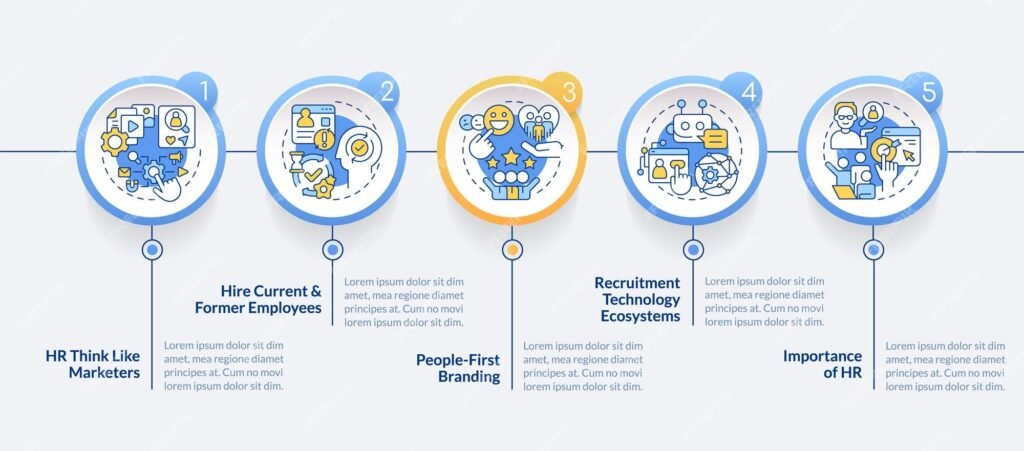IT RECRUITMENT TRENDS

Introduction
In the fast-paced world of technology, staying ahead of the curve is crucial for hiring agencies and recruiting companies. As we approach 2024, the landscape of IT recruitment is constantly evolving, driven by advancements in technology, changing market dynamics, and the ongoing impact of the COVID-19 pandemic. To thrive in this dynamic environment, corporate recruitment strategies must adapt and embrace the latest trends to attract and hire top tech talent The COVID-19 pandemic has reshaped the way we work, and the hybrid work model has emerged as a prominent trend that will continue to evolve in 2024. With the rise of remote work, companies have realized the benefits of flexibility and increased productivity. However, as the world gradually recovers from the pandemic, there are signs of a decline in the adoption of the fully remote work model. Major tech giants like Google and Apple are actively recalling employees to the office, citing concerns about collaboration and maintaining company culture.
While the fully remote work model may decline, the hybrid work model, which combines remote and in-office work, is likely to become the new normal. This model offers the best of both worlds, allowing employees to enjoy the flexibility of remote work while fostering collaboration and social interaction in the office. Hiring agencies should be prepared to adapt their recruitment strategies to attract candidates who thrive in a hybrid work environment and have the necessary skills to excel in remote and in-person settings.
Proactive Candidate Engagement
While passive recruitment has been the norm for many years, with recruiters waiting for candidates to apply for open positions, the job market has become increasingly competitive. To stay ahead, hiring agencies must take a more proactive approach to engage with potential candidates.
Proactive candidate engagement involves actively reaching out to passive candidates who may not be actively seeking new opportunities. This can be done through targeted networking, personalized outreach, and building relationships with potential candidates. By proactively engaging with candidates, hiring agencies can tap into a wider talent pool and attract top tech talent who may not have considered a career move otherwise.
Emphasizing Diversity and Inclusion
Diversity and inclusion have been hot topics in the corporate world, and they will continue to be a key focus in IT recruitment in 2024. Research has shown that diverse teams drive innovation, creativity, and higher profitability. Despite this, many industries, including the tech sector, still lack diversity in their workforce.
Hiring agencies have a crucial role to play in promoting diversity and inclusion in tech recruitment. They must actively seek out and include candidates from underrepresented groups, ensuring a fair and inclusive hiring process. This can be achieved by implementing unbiased candidate evaluation tools, providing diversity training to recruiters, and partnering with organizations that promote diversity in the tech industry.
Building a Strong Employer Brand
In a competitive job market, a strong employer brand is essential to attract top tech talent. Potential candidates are increasingly researching companies and evaluating their employer brand before applying for a position. Hiring agencies must work closely with their clients to build and promote a compelling employer brand that resonates with tech professionals.
A strong employer brand goes beyond salary and benefits. It encompasses the company’s culture, values, work-life balance, career development opportunities, and commitment to diversity and inclusion. Hiring agencies should help their clients showcase these aspects through compelling job descriptions, engaging career websites, and effective employer branding strategies.
Embracing Data-Centric Recruiting
Data-driven decision-making has become a standard practice in many industries, and IT recruitment is no exception. In 2024, hiring agencies must embrace data-centric recruiting strategies to make informed hiring decisions. By leveraging data and analytics, recruiters can gain valuable insights into the effectiveness of their recruitment processes, identify areas for improvement, and make data-driven decisions.
Strategic metrics such as time to fill, source of hire, quality of hire, and diversity metrics can provide recruiters with actionable insights to optimize their recruitment strategies. Data-centric recruiting also enables recruiters to identify trends, predict future hiring needs, and align their recruitment efforts with the company’s business goals.
Conclusion
As we approach 2024, the IT recruitment landscape is evolving rapidly. Hiring agencies must adapt to the changing trends and embrace new strategies to attract and hire top tech talent. Embracing the hybrid work model, proactively engaging candidates, leveraging recruiting automation, promoting diversity and inclusion, building a strong employer brand, adopting data-centric recruiting, and addressing emerging trends like the gig economy and pay transparency are key to success in the evolving IT recruitment industry.
